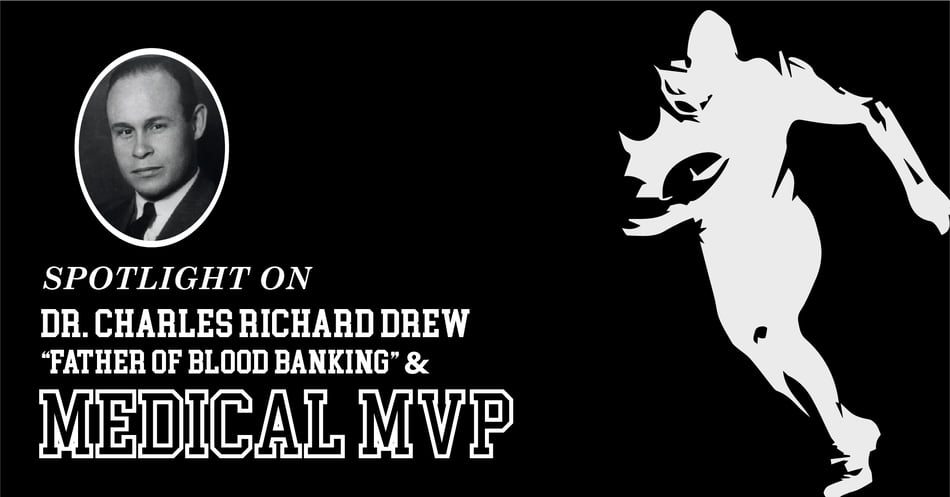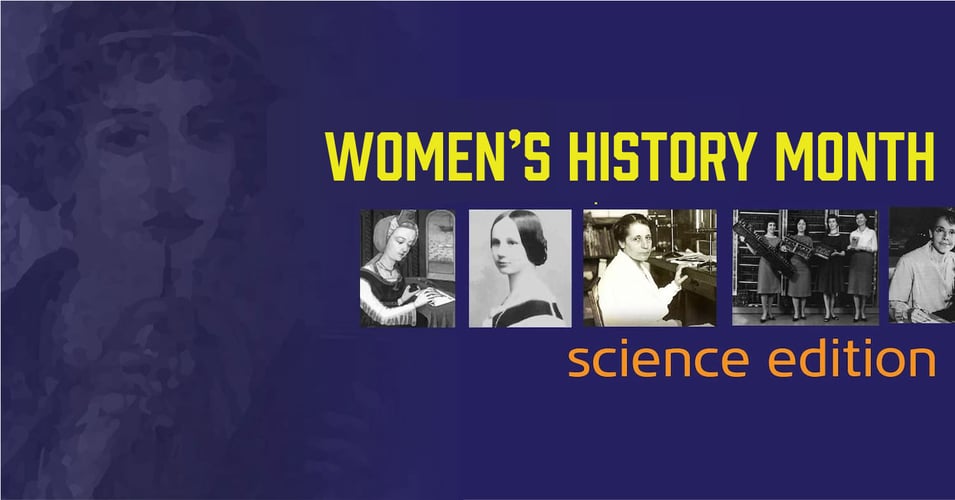Spotlight on Dr. Charles Richard Drew: Father of the Blood Bank

he neighborhood school blood drive is one of those events that is so common, so American, that it has just become a part of our national landscape. However, the blood donated at those events goes on to save millions of lives every year. The system of collecting, preserving, storing and transporting blood to hospitals around the country and the world is possible due to the pioneering work by Dr. Charles Richard Drew, a medical hero born into a country that tried everything to stop him from succeeding. But just as he dodged linebackers on the fields of Amherst on his way to scoring touchdowns, Dr. Drew would make it through many more obstacles to change the world.
Charlie Drew was born in 1904, the first child of a middle-class couple living in Foggy Bottom, Washington, D.C. during that neighborhood's heyday. His father, a financial secretary and carpet layer, and his mother, who trained to be a teacher, instilled in their son Charlie and his younger sisters and brother the importance of academic and personal achievement. At that time, despite school segregation, Washington D.C. was the hope to many affluent black families, so Charlie's schools were excellent. While his academic performance was average, Charlie excelled in sports at both Stevens Elementary and at the renowned college preparatory Dunbar High School, the first public high school for black students.
In college, Charlie continued to face obstacles in his way due to his race. Despite earning an athletic![]() scholarship to Amherst in 1922, he was passed over numerous times for team captain despite his being the undisputed top athlete on the team. He became interested in science and medicine enough that he decided to apply to medical school, only to find American programs barring his acceptance due to race. Dodging these obstacles, the young man enrolled at the McGill Medical School in Montréal, where he not only graduated second in his class, he won an annual prize in neuroanatomy, was elected to the medical honor society, served on the university's medical journal editorial staff, and won the J. Francis Williams Prize in medicine – proving once again to be an MVP.
scholarship to Amherst in 1922, he was passed over numerous times for team captain despite his being the undisputed top athlete on the team. He became interested in science and medicine enough that he decided to apply to medical school, only to find American programs barring his acceptance due to race. Dodging these obstacles, the young man enrolled at the McGill Medical School in Montréal, where he not only graduated second in his class, he won an annual prize in neuroanatomy, was elected to the medical honor society, served on the university's medical journal editorial staff, and won the J. Francis Williams Prize in medicine – proving once again to be an MVP.
| Charles Drew, star athlete at Amherst College 1923 |
Despite these extraordinary achievements, Dr. Drew would have to continue to keep his eye on the ball as more obstacles were thrown in his path. The newly graduated Dr. Drew then began his internship and surgical residency at Montréal Hospital, where he worked with bacteriologist John Beattie on the treatment of shock and fluid replacement, a topic that would grow to fascinate him. Dr. Drew wanted to continue this line of work after his residency, applying to numerous American medical centers, including the Mayo Clinic. Each of them refused his application; white patients would refuse to be treated by a black doctor, they said. So instead, Dr. Drew joined the faculty at Howard University, where he would also leave a lasting legacy.
As part of the Howard University's development of future leaders, Dr. Drew returned to school, earning a second doctorate degree, this time from Columbia University. He was a stellar student, impressing all his mentors; and yet, when it came time to begin his fellowship at Presbyterian Hospital in New York under Dr. Allen Whipple, he was assigned to work with John Scudder in the blood bank, keeping Dr. Drew away from direct patient access. Undeterred again, Dr. Drew became immersed in his work, completing such an extraordinary senior dissertation that Dr. Scutter called it a "masterpiece... one of the most distinguished essays ever written."
Based on his work in standardizing the way blood should be collected, treated, stored, and transported, Dr. Drew was made head of the Blood for Britain project the same year of his Columbia graduation, 1940. His leadership and research led to almost 15,000 blood donations and more than 5,000 liters of life-saving blood delivered to Great Britain as it defended against attacks from Germany. One of his most recognizable contributions was the creation of the first mobile blood donation unit, the refrigerated mobile clinics we now call "bloodmobiles" (photo inset). He also determined the protocols for testing blood for bacterial contamination and preserving it until delivery.![]()
All while heading this critical war effort, Dr. Drew was also passing his American Board of Surgery exam, starting a family with Spelman Professor Minnie Lenore, and becoming assistant director of the American Red Cross's pilot program, all in 1941. In what must have seemed like yet another blow in his already challenging career path, the American Red Cross did not accept blood donations from black individuals, a practice he would call "unscientific and insulting to African Americans." Even after the Red Cross finally accepted donations from black individuals, in 1942, it would continue to segregate blood by race until 1950.
In 1941, Dr. Drew returned to Howard University, where he became Head of the Department of Surgery and Chief of Surgery at Freedmen's Hospital until his untimely death in 1950. During his 9 years at the prestigious school, his goal was to "train young African American surgeons who would meet the most rigorous standards in any surgical specialty" and "place them in strategic positions throughout the country where they could, in turn, nurture the tradition of excellence." Despite the many attempts to sideline such a talented player in the field, Dr. Drew finally rose to the position of Coach. And surely as part of the mentorship, Dr. Drew instilled in his students their need to prepare to dodge obstacles based on race, to charge ahead toward their goal and to persevere. He continued these efforts by working to end racial exclusion in local medical societies, medical specialty organizations, and the American Medical Association. Not only is Dr. Charles Richard Drew "the Father of Blood Banking," he proved an incredible front lineman, opening the field up for those who came after him and creating a forward path to the goal line.
![EOScu Logo - Dark - Outlined [07182023]-01](https://blog.eoscu.com/hubfs/Eoscu_June2024/Images/EOScu%20Logo%20-%20Dark%20-%20Outlined%20%5B07182023%5D-01.svg)




